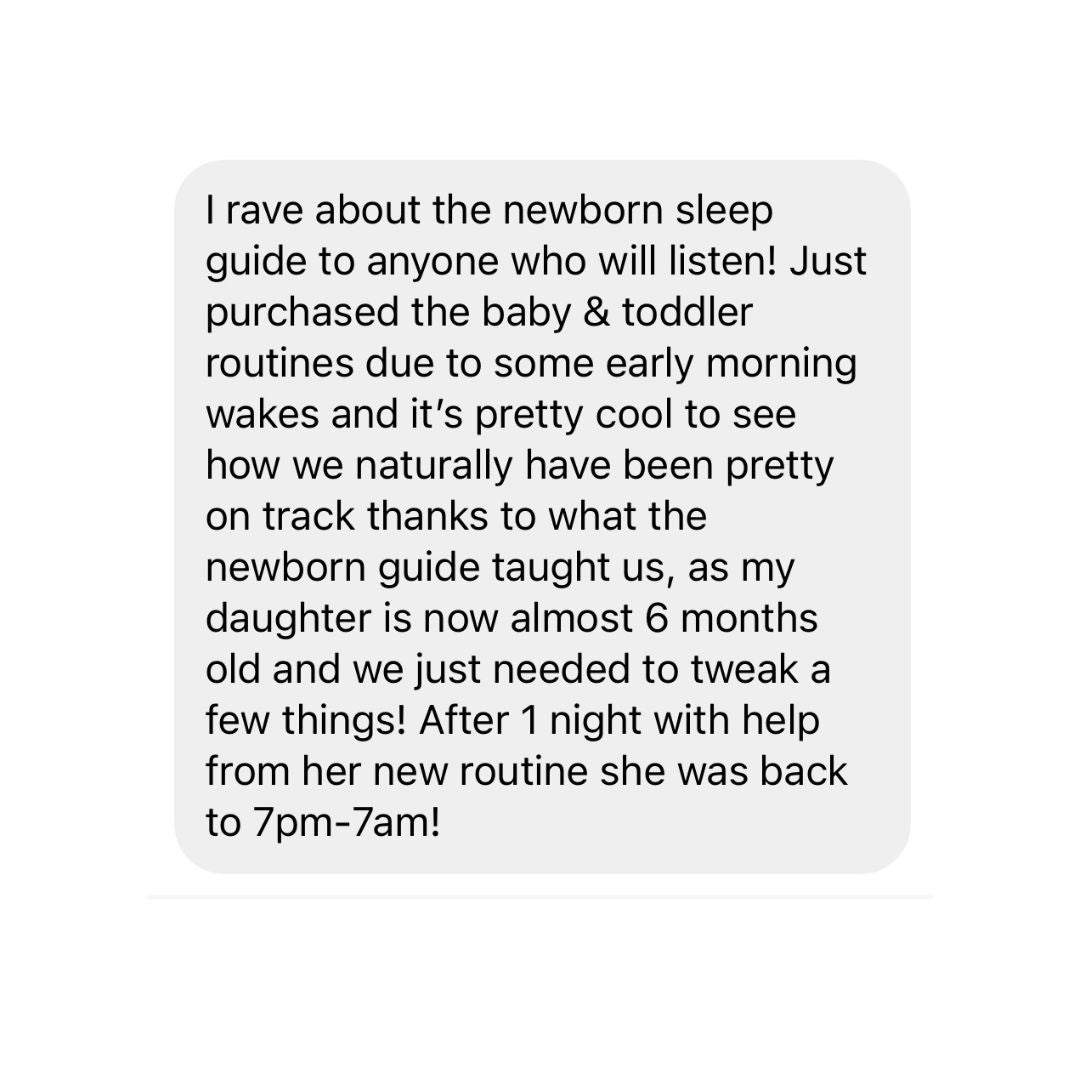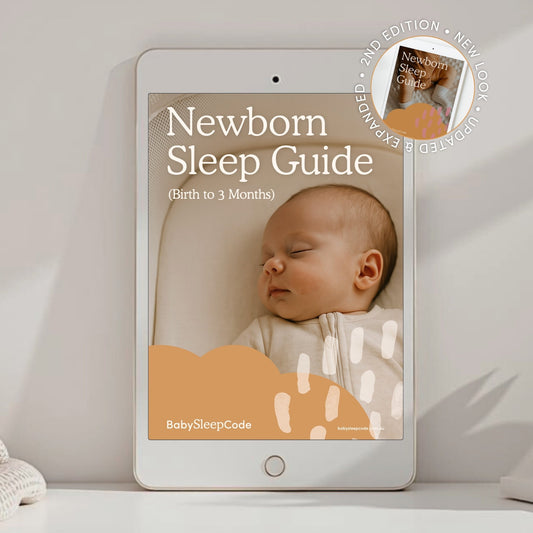A wake window is the recommended time your baby should be awake between sleep times, according to their age.
If a baby is kept awake for too long they can slip into an overtired zone and their adrenal glands will start pumping out cortisol, a stress-related hormone that makes them extra fussy and it can become almost impossible to settle them to sleep.
But they also need enough awake time to build up enough sleep pressure to be able to nap well. If you settle them to sleep too early (even if they were showing tired signs), they’ll end up having a short nap because they simply weren’t tired enough to sleep longer.
Which is why following wake windows is really helpful. It ensures they have an adequate time awake (not too much, or too little) to give them the best chance of taking a decent nap.
When does a wake window start?
For newborns, the wake window starts from the moment they finished sleeping. So if your baby wakes early from a nap, and doesn’t resettle at all, you would count their wake window from the moment they first woke.
For older babies, you can start to count time awake in the cot towards total sleep or ‘rest time’. Too much total rest time can start to cause a split night, so make sure you don’t leave your baby in the cot resting for more than their recommended total sleep time.
What is your baby's ideal wake window and nap length?
Our Newborn Sleep Guide, and our age-appropriate nap and feeding routines for babies and toddlers, include recommended wake windows and detailed nap and feeding times to set your days and nights up for success. They're based on the ideal amount of time awake to encourage great naps, and the right balance of day sleep to foster great nights.
“Every new parent needs this guide, not only will your baby be so much happier following the routines, they will sleep well and you will finally get some of your sanity back.” Tara, G
“Having this guide from 3 weeks of age has been a life saver. My baby is now 11 weeks old and has just slept 12 hrs straight 3 nights in a row!” Jacqs, T
Do wake windows include feeding time?
Any feeding time (if awake during the feed) is also counted as a part of the wake window. In the early weeks, a newborn baby might only be awake for a short period just enough to feed, nappy change and straight back to sleep. But after the first few weeks your newborn baby will be able to tolerate more time awake after a feed.
Does a wake window include settling time?
When a newborn is falling asleep, they start their sleep cycle in REM sleep. REM sleep is a light type of sleep where a baby might still move and twitch their arms and legs, their eyelids might flutter, their breathing is rapid and some babies will grunt and grizzle. Parents might even think their baby is still awake, but this is still restorative sleep. So settling time can often actually count towards sleep time. But if your newborn baby is taking a long time to settle, more than five minutes, it might mean their routine timing is off.
Should wake windows increase throughout the day?
While you may have heard that you should increase your wake windows over the day, in our experience having shorter wake windows in the morning and long wake windows before bed can cause all sorts of sleep issues. Leading to early morning wakes for some, or fussy witching hours in the evening for others. So we actually recommend against increasing wake windows over the day, and instead following fairly consistent wake windows throughout the entire day (until your baby is ready to drop from 3 to 2 naps).
We also recommend stopping following wake windows and switching to a consistent daily nap and feeding routine from around 3 to 4 months, or no later than 6 months.


















